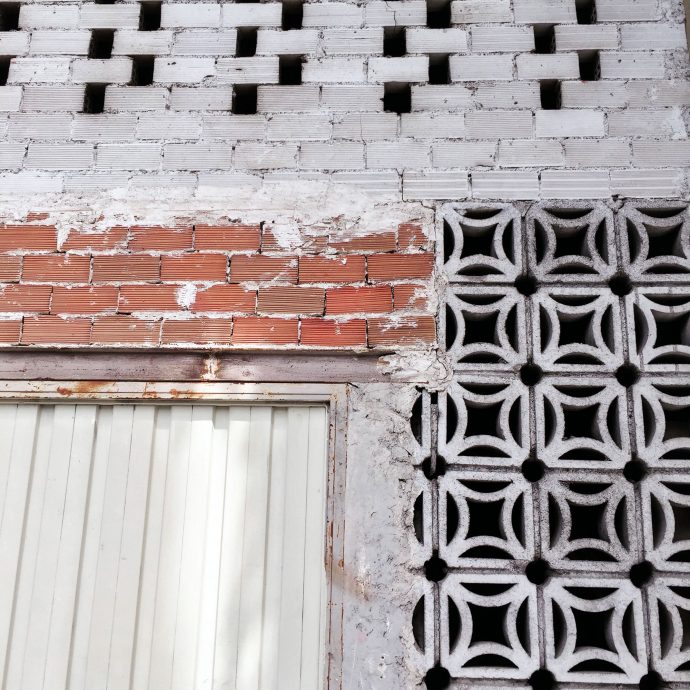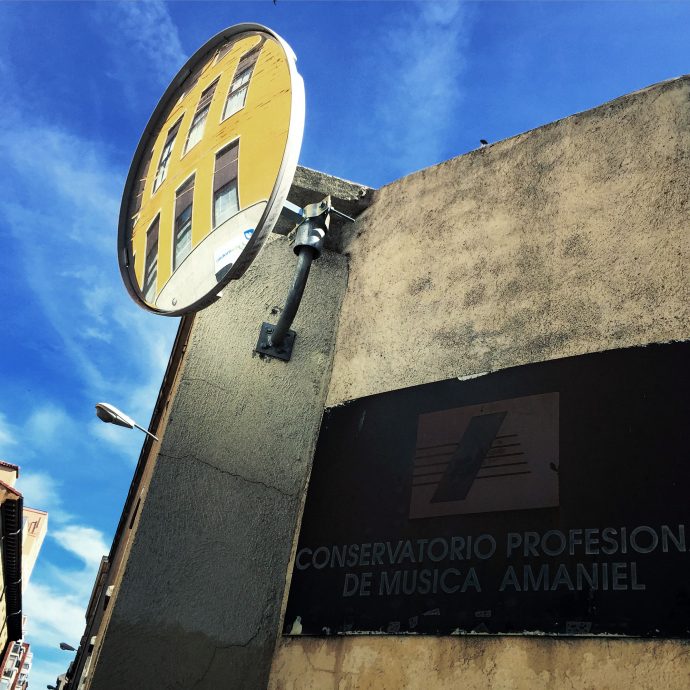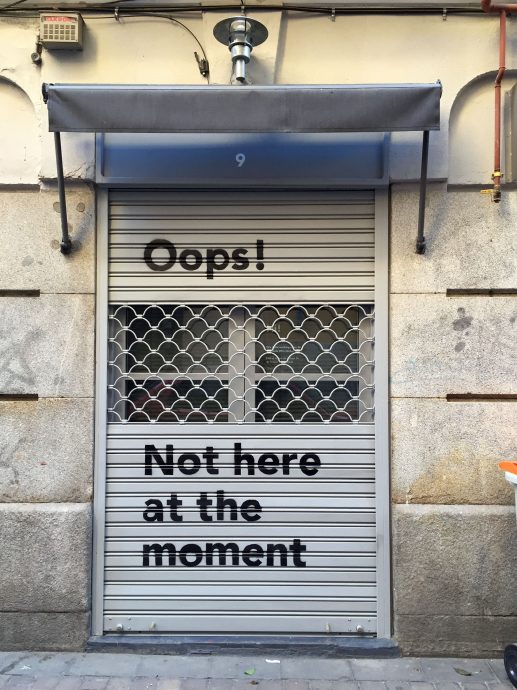Everyday monuments: Madrid
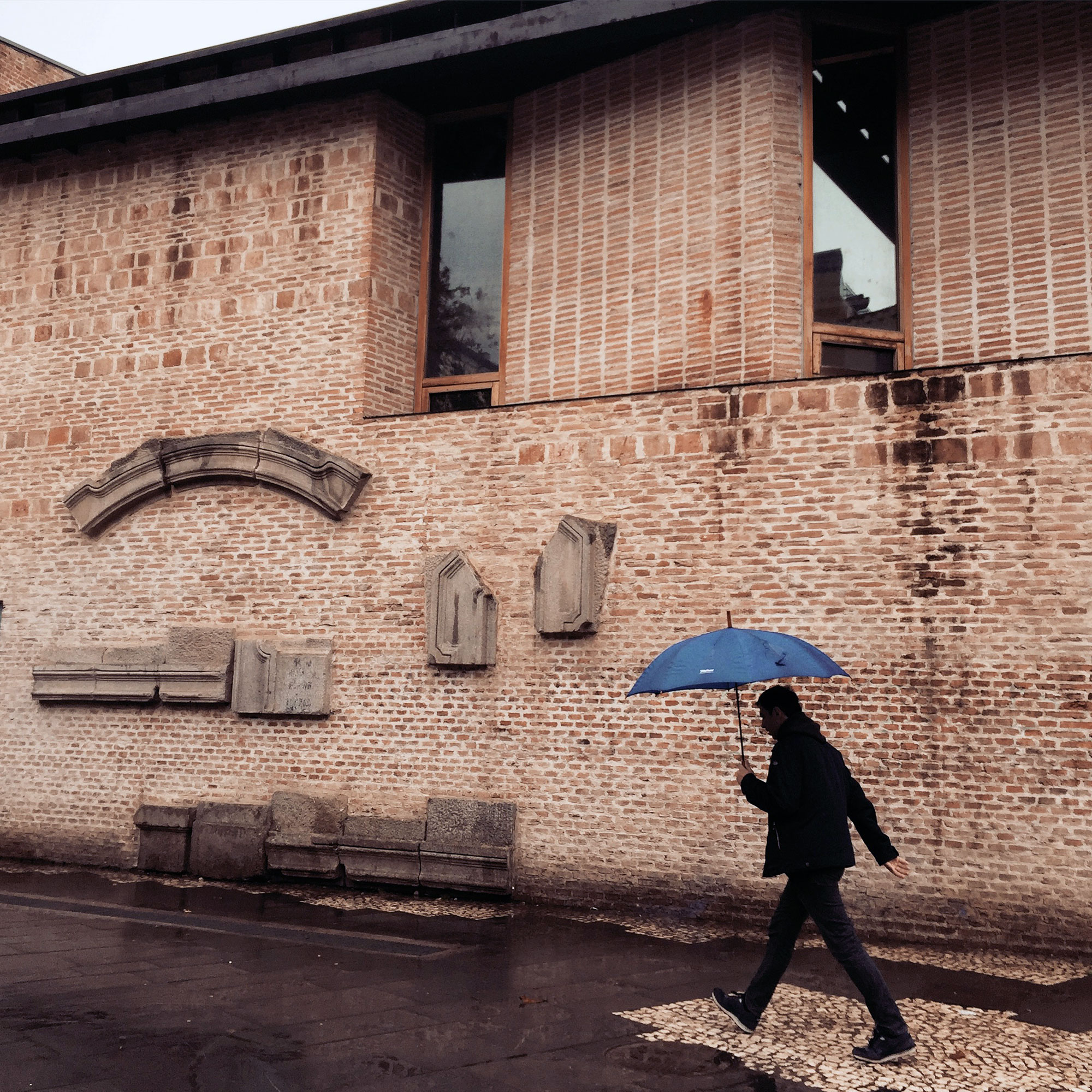
For graduate architect and writer Amelyn Ng, the streets of Madrid have “a quiet magnetism that is hard to explain. Not in the city’s tourist or retail attractions, to which most visitors flock, but in its ‘in-between’ spaces or rhythms of the everyday.” Back from an architectural study tour of the city, Amelyn shares this psychogeographic portrait of Spain’s capital.
In between study, I spent my days off drifting through the inner city and experiencing Madrid’s heterogeneity, layer by layer. My maiden trip to the Spanish capital came via sponsorship for a graduate architect workshop at the ETSAM, Madrid’s school of architecture, affording me scope to discover the city in my downtime. The surprising juxtapositions – new and old, formal and informal, monumental and banal – give Madrid its rich texture and urban character.
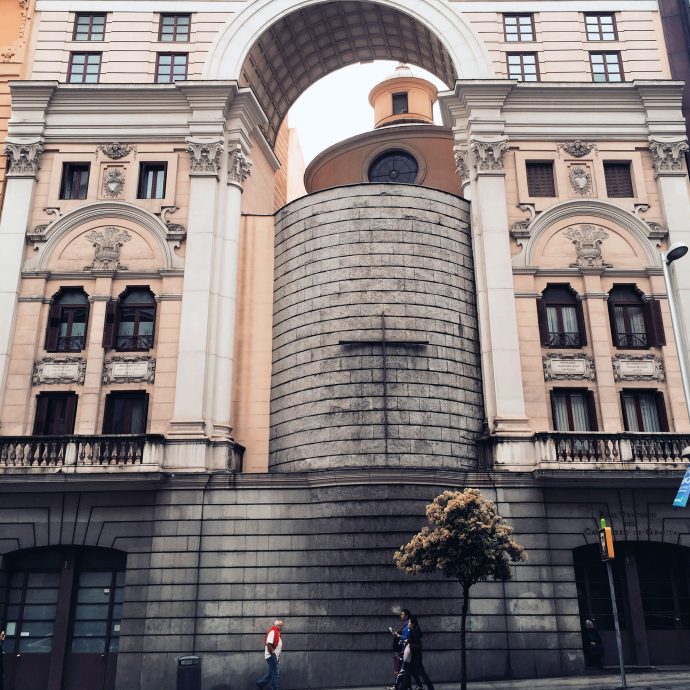
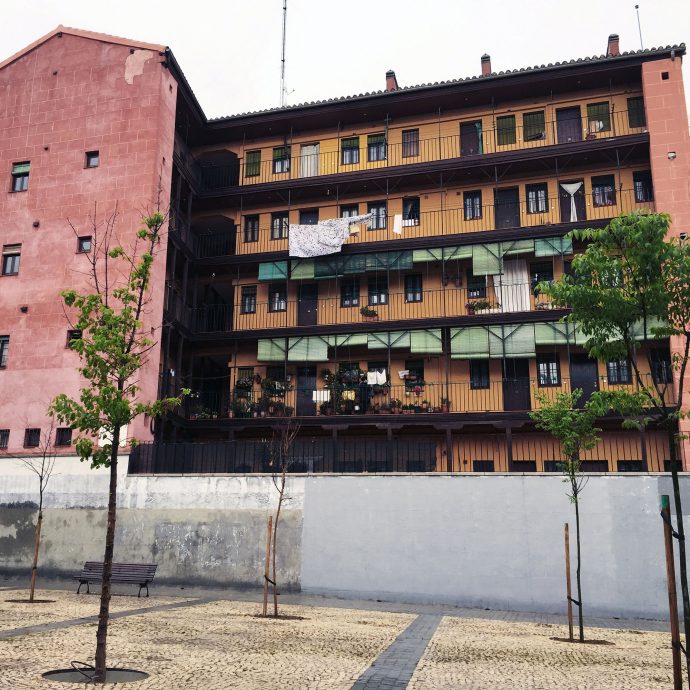
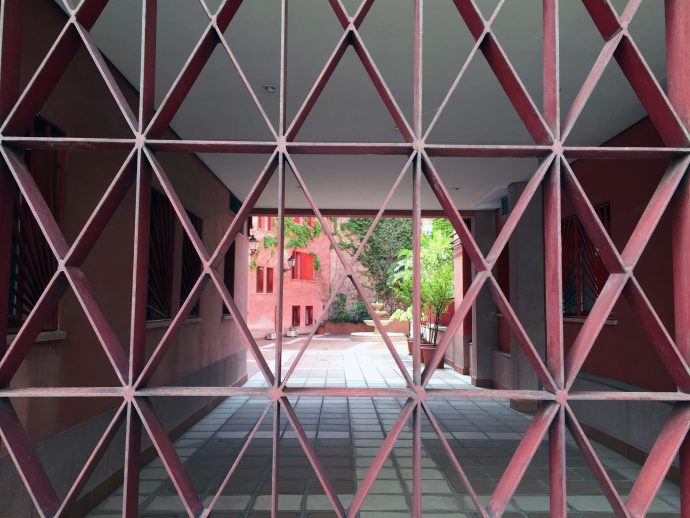
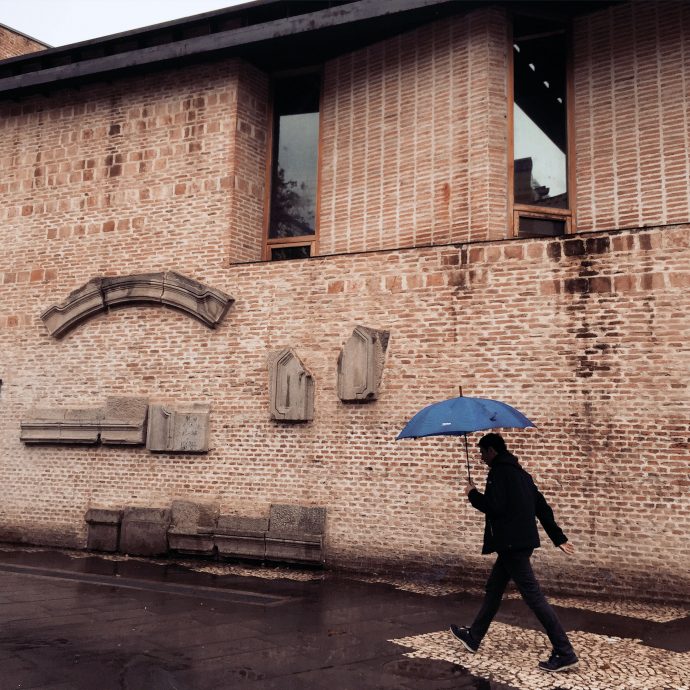
Throughout the trip, I found myself deleting the usual tourist snaps from my camera in order to accommodate more pictures of these urban scenes. There was a strangely domestic scale to the city streets, revealed in the smallest of details – carefully tended potted plants in a grated blind window.
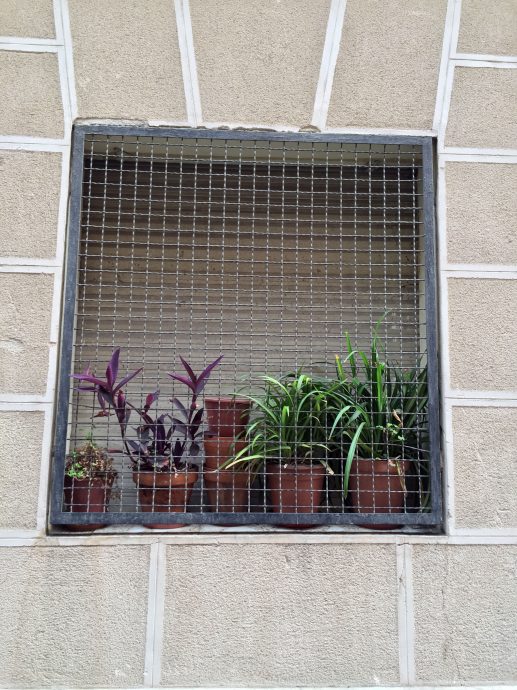

The city’s soft infrastructures, such as urban vegetation, are a surprising indication of the state of care (or neglect) of a neighbourhood. One street would feature year-round blooms maintained daily by neighbouring cultural institutions such as the Caixaforum, while in contrast, the vegetation in the next street across was no longer ‘green’. I also came across a heavyset 70s housing complex with the most amazing cascades of hanging plant growth, tucked away on a quiet street in Malasaña.
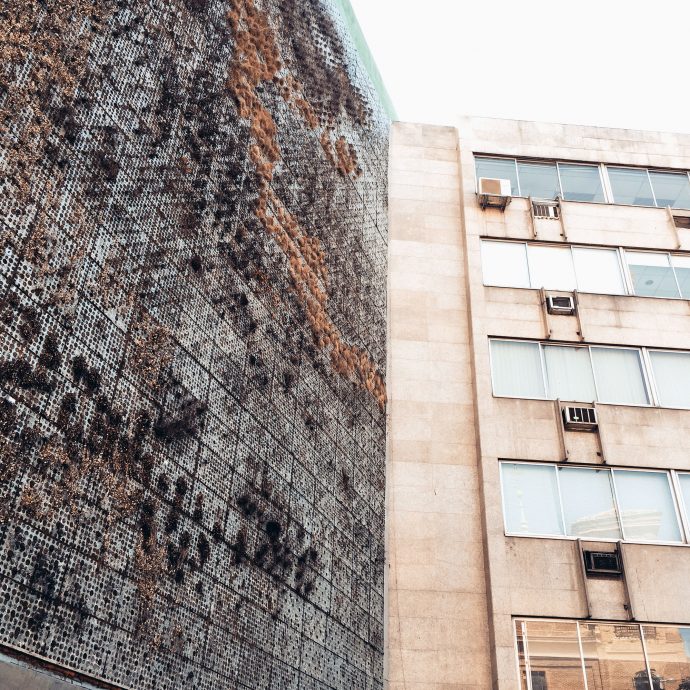
The Edificio Princesa was completed in 1975 by Fernando Higueras in true Corbusian fashion. Originally built for military retirees, it is now the inner-city home of many design-oriented entrepreneurs and young families. From the prolific vertical vegetation to the asymmetry of hand-laid breeze blocks, Princesa’s time-worn concrete facades are enlivened by expressions of domestic life.
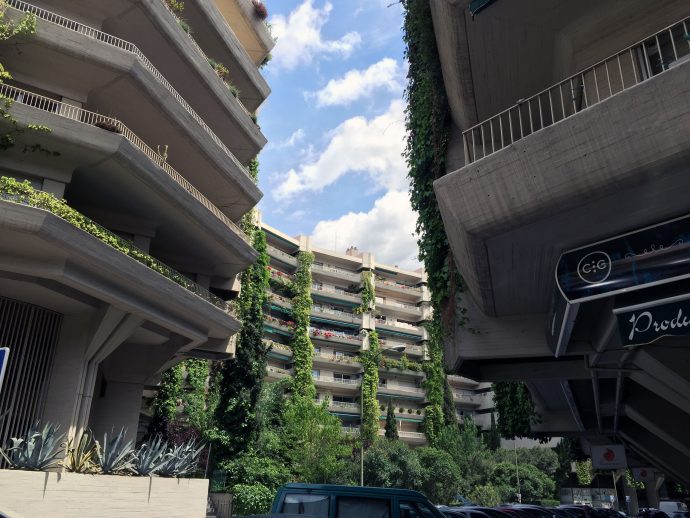
A more sculptural use of concrete may be found in the university suburb of Moncloa. Edificio Galaxia is another example of a lucky encounter with Madrid’s idiosyncratic architecture, a dense collection of apartments around a sunken plaza of shops, replete with bright-coloured awnings and a generous deep-soil roof garden. A cast-in-place spiral ramp sweeps off the street onto the mezzanine level above, featuring pedestrian circulation almost as a processional rite-of-passage into the building. The use of concrete is embraced across all the scales of design, from large building structures to planter boxes. It is a large, ageing concrete housing complex near the University, with a curiously sculptural pedestrian bridge that encircles the front carpark entry in a (completely gratuitous) ceremonial path up to the residents’ roof garden. Like many other hidden gems of the city, Edificio Galaxia doesn’t broadcast its presence – it is virtually invisible to those who aren’t looking.
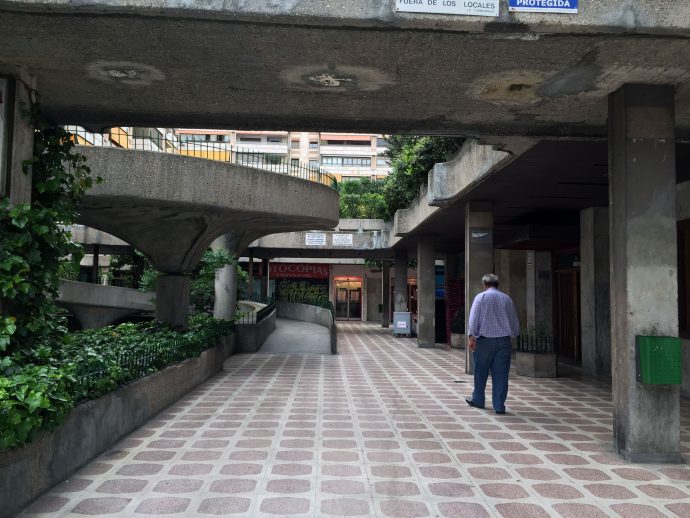
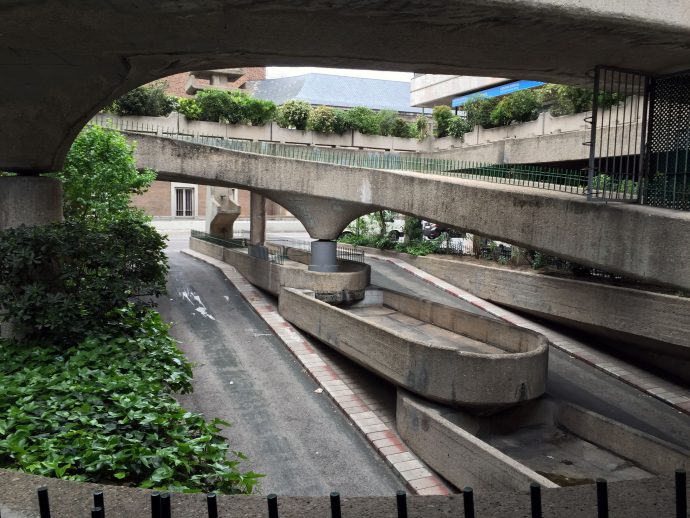
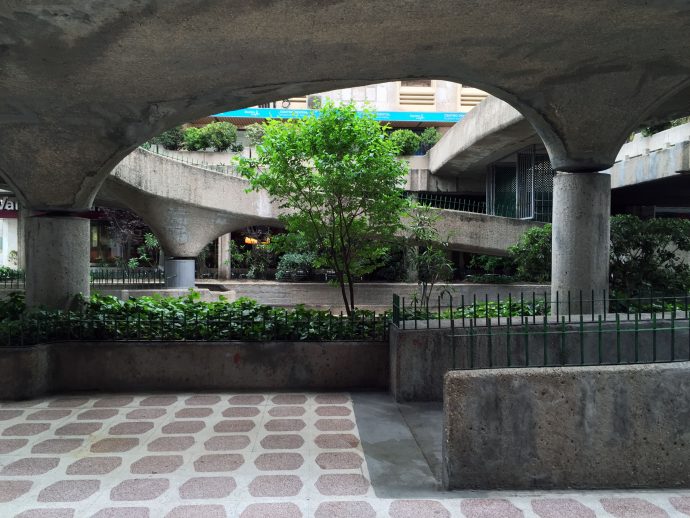
Walking through the streets of Madrid was like traversing a large, evolving patchwork – each patch heralding a different set of urban conditions and textures, yet tightly stitched to the next. To me, Madrid will always feel ‘unfinished’ – as if caught off-guard in a state of transition. I hope to continue recording these small moments of urban ambiguity in the next cities I visit.
